Abstract
One hundred reference strains and 1,240 clinical isolates representing 26 species of the family Micrococcaceae were used to evaluate the potential of tests for synergistic hemolysis, adherence to glass, pyroglutamyl-beta-naphthylamide hydrolysis, and susceptibility to a set of five antimicrobial agents for differentiating these species and strains within the species. Sixty-eight percent of the clinical isolates exhibited synergistic hemolysis; 69% of the clinical staphylococci but none of the micrococci or stomatococci were adherence positive, and 92% of the strong positive adherence reactions were produced by strains of Staphylococcus epidermidis. Strains from 15 of the species were pyroglutamyl-beta-naphthylamide positive, but this test separated Staphylococcus xylosus from other novobiocin-resistant staphylococci and Staphylococcus intermedius from other coagulase-positive species. A polymyxin B disk helped differentiate S. epidermidis from most other coagulase-negative staphylococci, and a bacitracin disk (10 U) helped differentiate Staphylococcus haemolyticus from most other novobiocin-susceptible staphylococci. All strains that were susceptible to furazolidone and resistant to Taxo A disks (bacitracin, 0.04 U; BBL Microbiology Systems, Cockeysville, Md.) were staphylococci. We observed a 91% correlation between species identification obtained with the Staph-Ident system (Analytab Products, Plainview, N.Y.) and conventional methods; but the micrococci and stomatococci were incorrectly identified as staphylococci with Staph-Ident, and several isolates of S. epidermidis were misidentified as Staphylococcus hominis because they were alkaline phosphatase negative. Both these problems can be prevented by adding the simple tests we describe to those already recommended when the Staph-Ident system is used to identify isolates of gram-positive, catalase-positive cocci.
Full text
PDF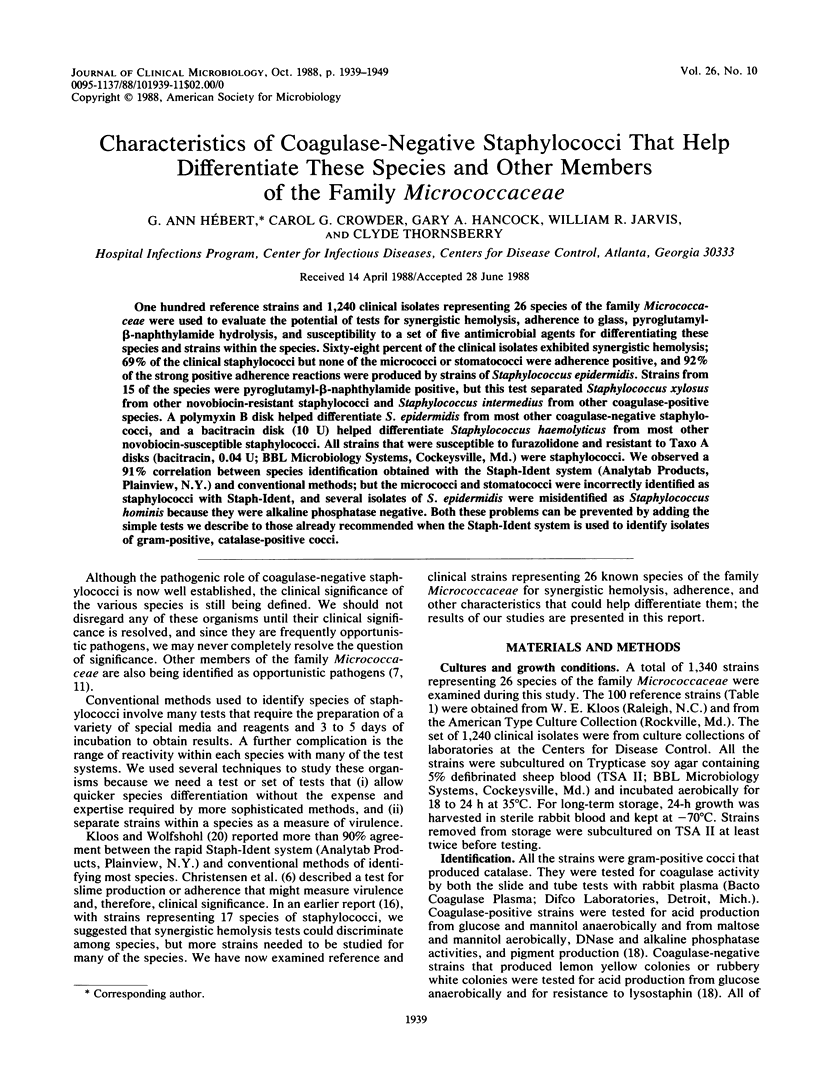
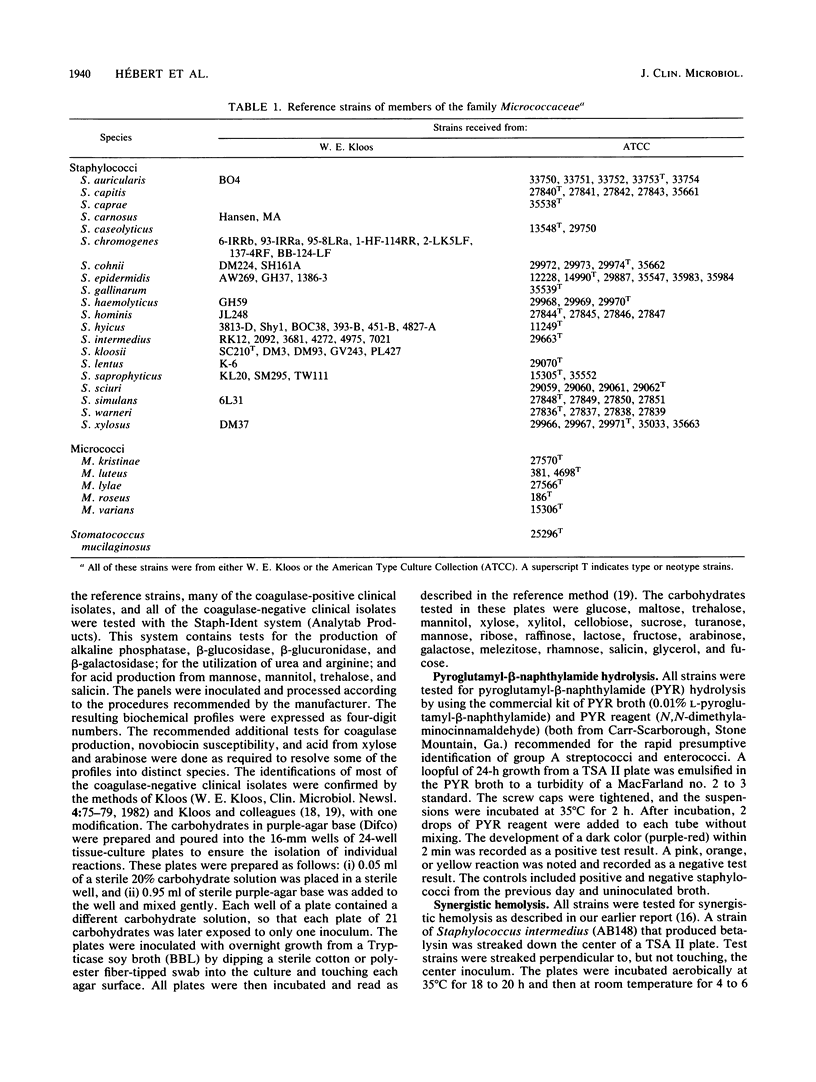
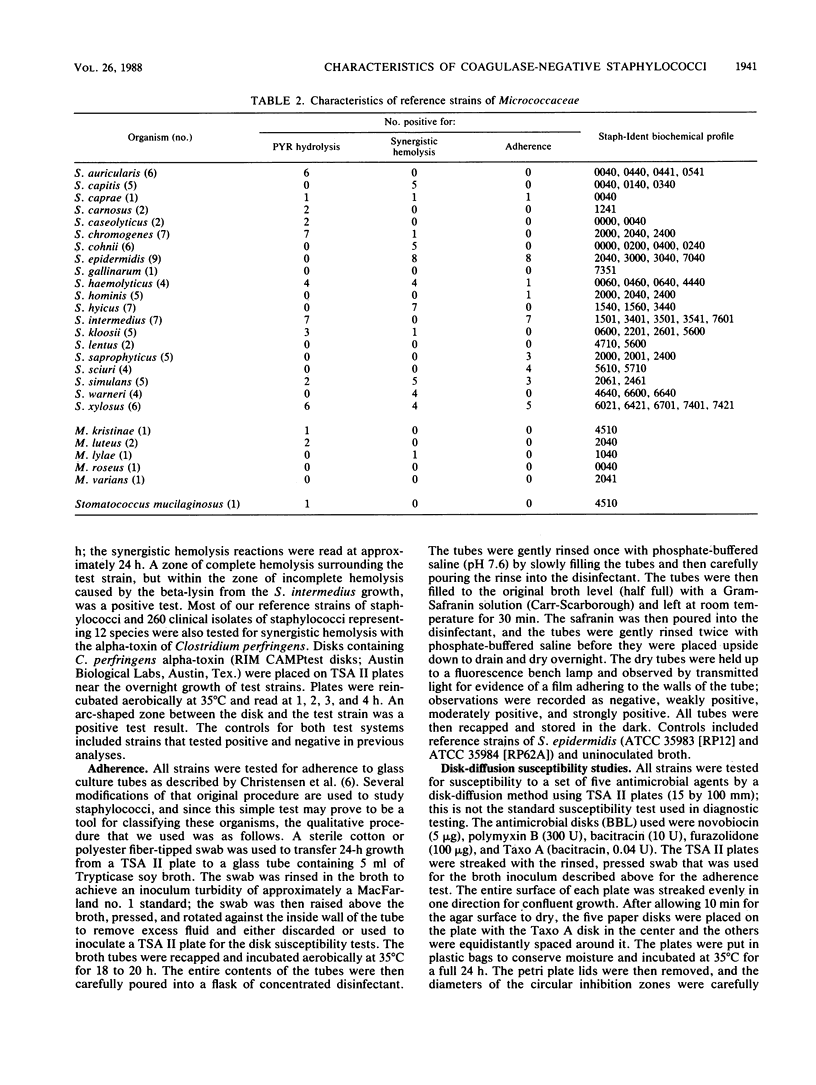
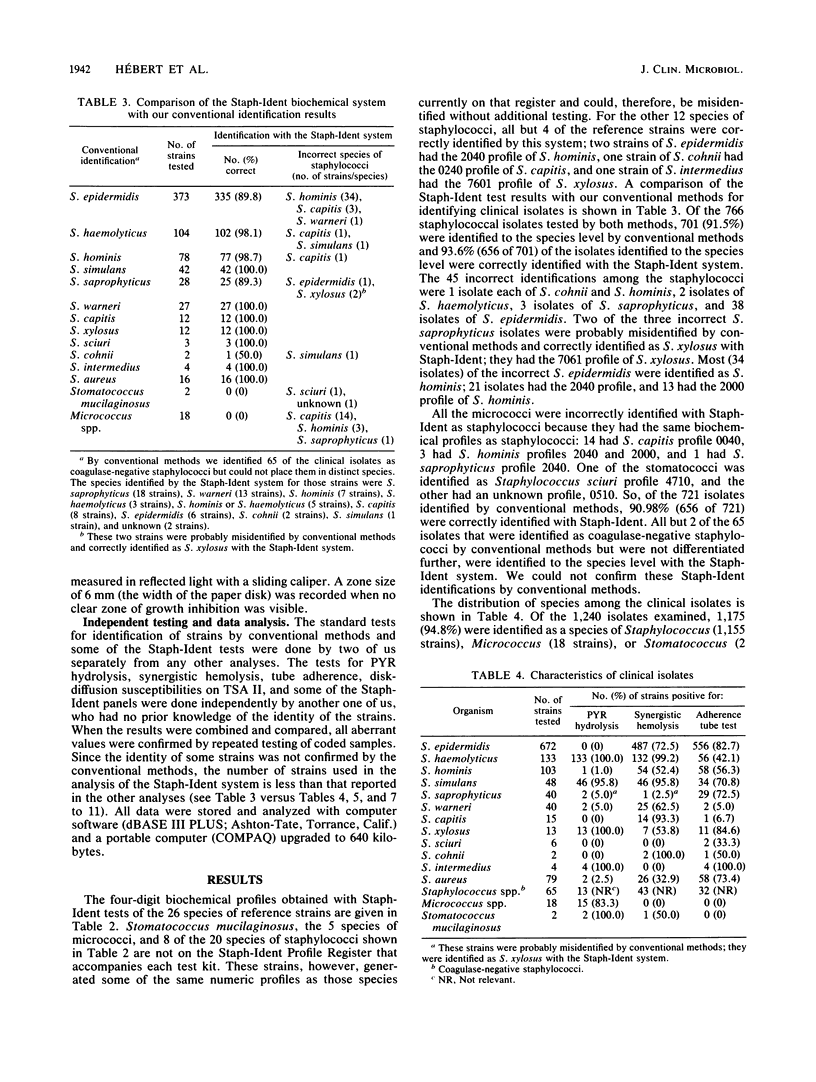
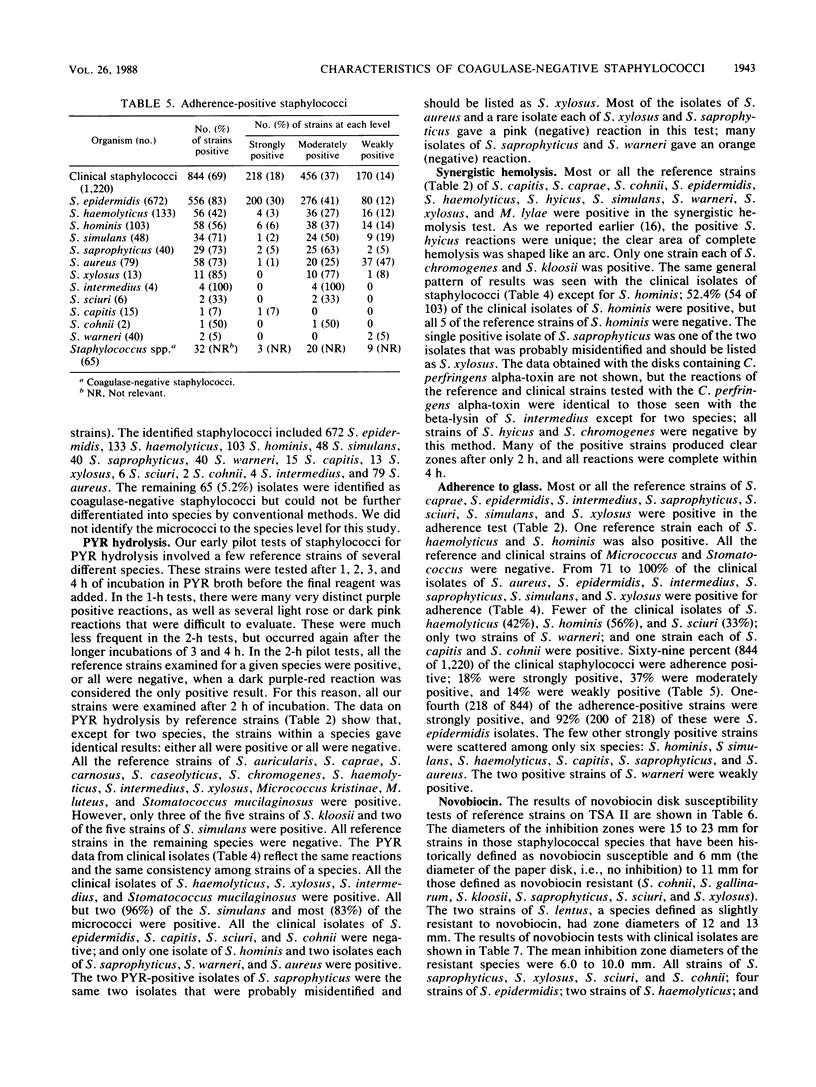


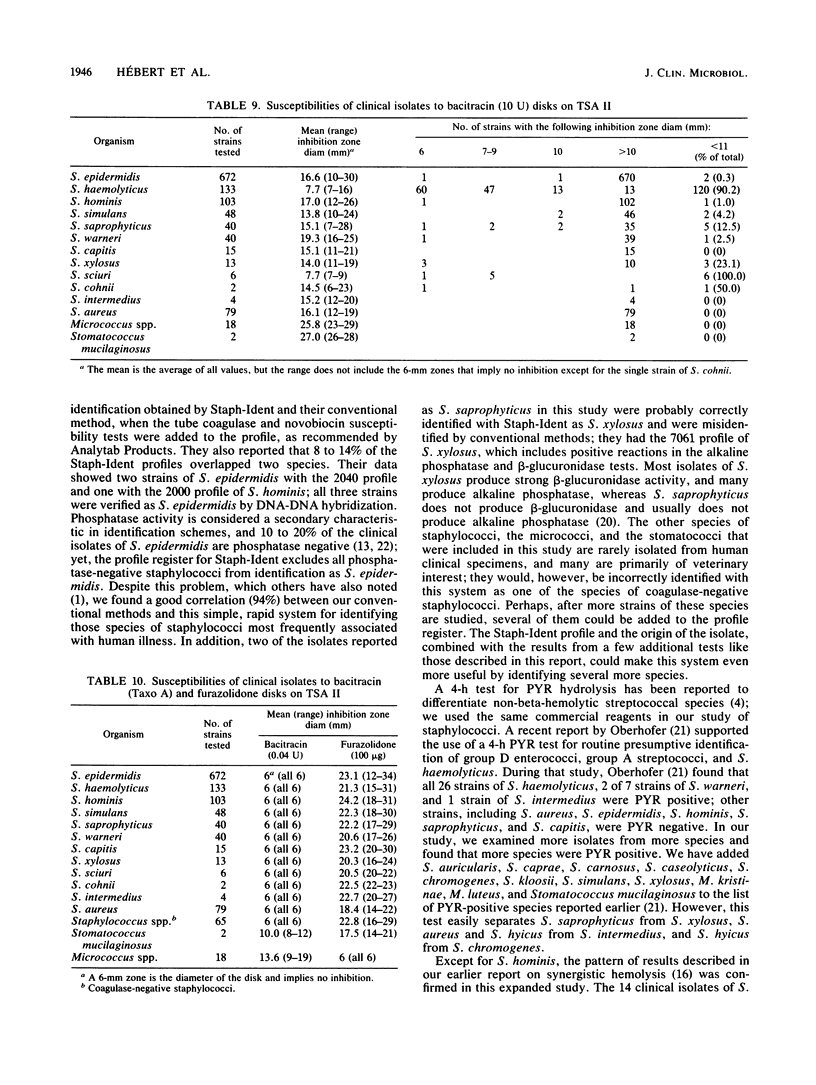

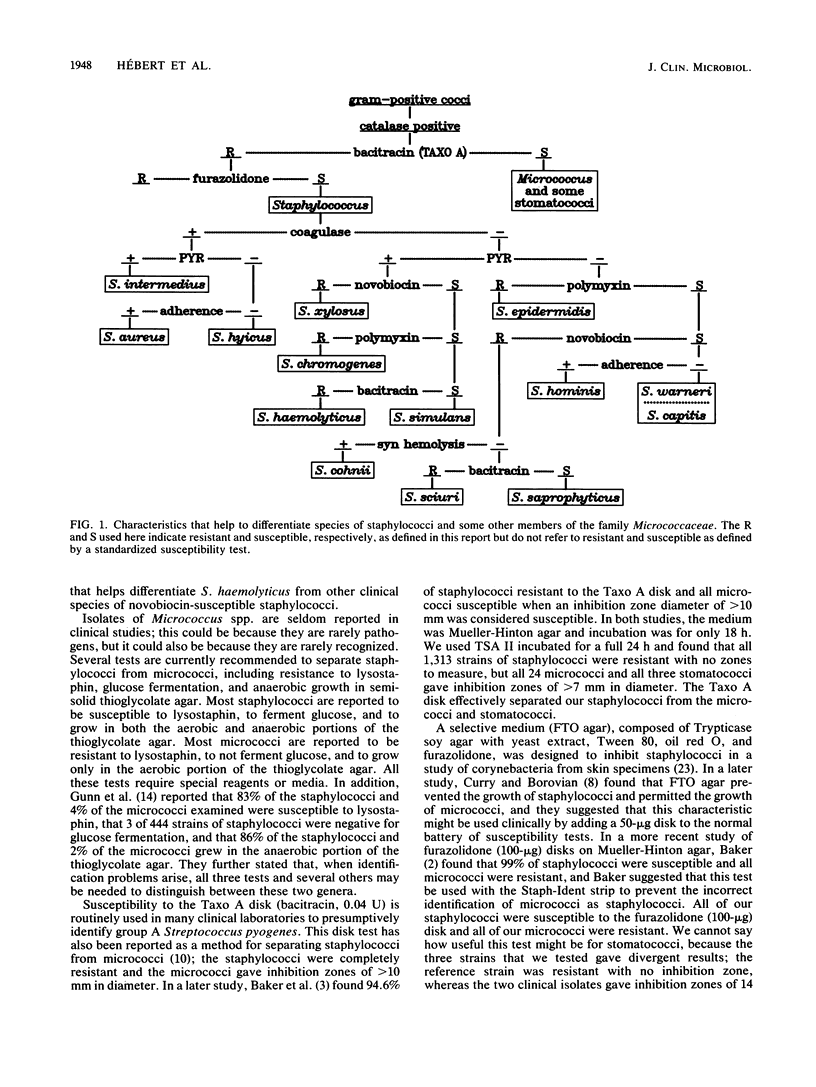
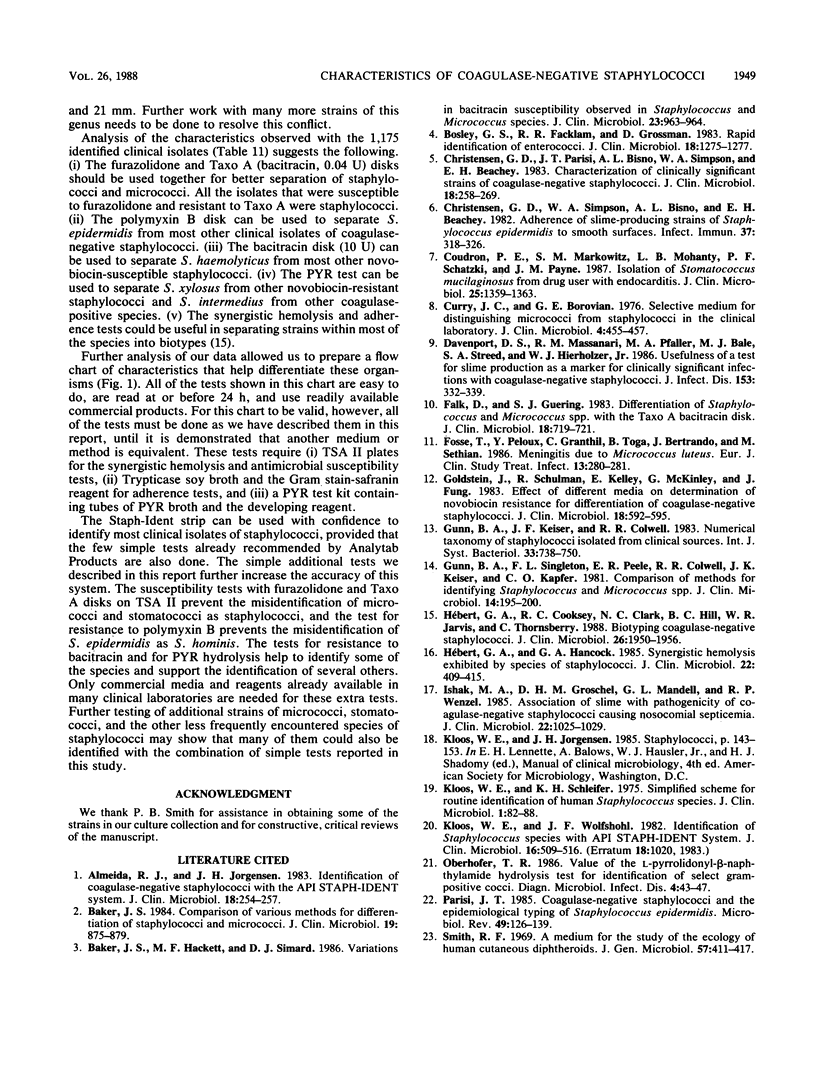
Selected References
These references are in PubMed. This may not be the complete list of references from this article.
- Almeida R. J., Jorgensen J. H. Identification of coagulase-negative staphylococci with the API STAPH-IDENT system. J Clin Microbiol. 1983 Aug;18(2):254–257. doi: 10.1128/jcm.18.2.254-257.1983. [DOI] [PMC free article] [PubMed] [Google Scholar]
- Baker J. S. Comparison of various methods for differentiation of staphylococci and micrococci. J Clin Microbiol. 1984 Jun;19(6):875–879. doi: 10.1128/jcm.19.6.875-879.1984. [DOI] [PMC free article] [PubMed] [Google Scholar]
- Baker J. S., Hackett M. F., Simard D. J. Variations in bacitracin susceptibility observed in Staphylococcus and Micrococcus species. J Clin Microbiol. 1986 May;23(5):963–964. doi: 10.1128/jcm.23.5.963-964.1986. [DOI] [PMC free article] [PubMed] [Google Scholar]
- Bosley G. S., Facklam R. R., Grossman D. Rapid identification of enterococci. J Clin Microbiol. 1983 Nov;18(5):1275–1277. doi: 10.1128/jcm.18.5.1275-1277.1983. [DOI] [PMC free article] [PubMed] [Google Scholar]
- Christensen G. D., Parisi J. T., Bisno A. L., Simpson W. A., Beachey E. H. Characterization of clinically significant strains of coagulase-negative staphylococci. J Clin Microbiol. 1983 Aug;18(2):258–269. doi: 10.1128/jcm.18.2.258-269.1983. [DOI] [PMC free article] [PubMed] [Google Scholar]
- Christensen G. D., Simpson W. A., Bisno A. L., Beachey E. H. Adherence of slime-producing strains of Staphylococcus epidermidis to smooth surfaces. Infect Immun. 1982 Jul;37(1):318–326. doi: 10.1128/iai.37.1.318-326.1982. [DOI] [PMC free article] [PubMed] [Google Scholar]
- Coudron P. E., Markowitz S. M., Mohanty L. B., Schatzki P. F., Payne J. M. Isolation of Stomatococcus mucilaginosus from drug user with endocarditis. J Clin Microbiol. 1987 Aug;25(8):1359–1363. doi: 10.1128/jcm.25.8.1359-1363.1987. [DOI] [PMC free article] [PubMed] [Google Scholar]
- Curry J. C., Borovian G. E. Selective medium for distinguishing micrococci from staphylococci in the clinical laboratory. J Clin Microbiol. 1976 Nov;4(5):455–457. doi: 10.1128/jcm.4.5.455-457.1976. [DOI] [PMC free article] [PubMed] [Google Scholar]
- Davenport D. S., Massanari R. M., Pfaller M. A., Bale M. J., Streed S. A., Hierholzer W. J., Jr Usefulness of a test for slime production as a marker for clinically significant infections with coagulase-negative staphylococci. J Infect Dis. 1986 Feb;153(2):332–339. doi: 10.1093/infdis/153.2.332. [DOI] [PubMed] [Google Scholar]
- Falk D., Guering S. J. Differentiation of Staphylococcus and Micrococcus spp. with the Taxo A bacitracin disk. J Clin Microbiol. 1983 Sep;18(3):719–721. doi: 10.1128/jcm.18.3.719-721.1983. [DOI] [PMC free article] [PubMed] [Google Scholar]
- Fosse T., Peloux Y., Granthil C., Toga B., Bertrando J., Sethian M. Meningitis due to Micrococcus luteus. Infection. 1985 Nov-Dec;13(6):280–281. doi: 10.1007/BF01645439. [DOI] [PubMed] [Google Scholar]
- Goldstein J., Schulman R., Kelley E., McKinley G., Fung J. Effect of different media on determination of novobiocin resistance for differentiation of coagulase-negative staphylococci. J Clin Microbiol. 1983 Sep;18(3):592–595. doi: 10.1128/jcm.18.3.592-595.1983. [DOI] [PMC free article] [PubMed] [Google Scholar]
- Gunn B. A., Singleton F. L., Peele E. R., Colwell R. R., Keiser J. K., Kapper C. O. Comparison of methods for identifying Staphylococcus and Micrococcus spp. J Clin Microbiol. 1981 Aug;14(2):195–200. doi: 10.1128/jcm.14.2.195-200.1981. [DOI] [PMC free article] [PubMed] [Google Scholar]
- Hébert G. A., Cooksey R. C., Clark N. C., Hill B. C., Jarvis W. R., Thornsberry C. Biotyping coagulase-negative staphylococci. J Clin Microbiol. 1988 Oct;26(10):1950–1956. doi: 10.1128/jcm.26.10.1950-1956.1988. [DOI] [PMC free article] [PubMed] [Google Scholar]
- Hébert G. A., Hancock G. A. Synergistic hemolysis exhibited by species of staphylococci. J Clin Microbiol. 1985 Sep;22(3):409–415. doi: 10.1128/jcm.22.3.409-415.1985. [DOI] [PMC free article] [PubMed] [Google Scholar]
- Ishak M. A., Gröschel D. H., Mandell G. L., Wenzel R. P. Association of slime with pathogenicity of coagulase-negative staphylococci causing nosocomial septicemia. J Clin Microbiol. 1985 Dec;22(6):1025–1029. doi: 10.1128/jcm.22.6.1025-1029.1985. [DOI] [PMC free article] [PubMed] [Google Scholar]
- Kloos W. E., Schleifer K. H. Simplified scheme for routine identification of human Staphylococcus species. J Clin Microbiol. 1975 Jan;1(1):82–88. doi: 10.1128/jcm.1.1.82-88.1975. [DOI] [PMC free article] [PubMed] [Google Scholar]
- Kloos W. E., Wolfshohl J. F. Identification of Staphylococcus species with the API STAPH-IDENT system. J Clin Microbiol. 1982 Sep;16(3):509–516. doi: 10.1128/jcm.16.3.509-516.1982. [DOI] [PMC free article] [PubMed] [Google Scholar]
- Oberhofer T. R. Value of the L-pyrrolidonyl-beta-naphthylamide hydrolysis test for identification of select gram-positive cocci. Diagn Microbiol Infect Dis. 1986 Jan;4(1):43–47. doi: 10.1016/0732-8893(86)90055-6. [DOI] [PubMed] [Google Scholar]
- Parisi J. T. Coagulase-negative staphylococci and the epidemiological typing of Staphylococcus epidermidis. Microbiol Rev. 1985 Jun;49(2):126–139. doi: 10.1128/mr.49.2.126-139.1985. [DOI] [PMC free article] [PubMed] [Google Scholar]
- Smith R. F. A medium for the study of the ecology of human cutaneous diphtheroids. J Gen Microbiol. 1969 Aug;57(3):411–417. doi: 10.1099/00221287-57-3-411. [DOI] [PubMed] [Google Scholar]


